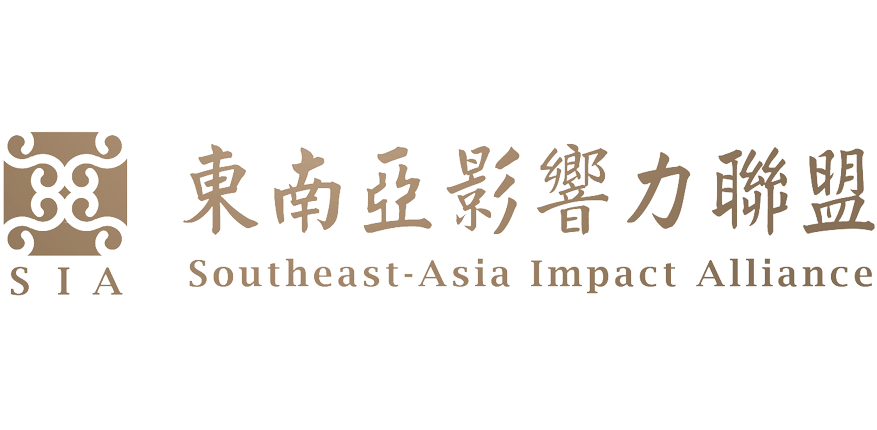Vietnamese Market Overview
Overview of Vietnam’s Economy
Throughout its history, Vietnam has undergone significant transformations. Originally an agrarian society, it has evolved into one of Southeast Asia’s emerging economies. Today, in addition to staying true to its agricultural roots, Vietnam actively participates in modern business and is on the frontlines of technology.
The country has been a development success story, growing from being one of the poorest nations to a middle-income economy in a single generation. As Vietnam progresses, it joins traditional practices with contemporary innovations, creating a landscape full of opportunities – but not without some unique challenges.
GDP Growth
From 2002 to 2021, the GDP per capita saw an increase of over threefold, approaching nearly US$3,700. By 2020, poverty rates (based on US$3.65/day, 2017 PPP) dropped to 3.8 percent, a decline from 14 percent in 2010.
Owing to its stable economic base, Vietnam’s economy has shown durability during various challenges. Anticipations suggest a decrease in GDP growth to 6.3 percent in 2023, from 8% in the previous year, influenced by a slowing in both domestic consumption and exports. However, by 2024, the country’s economic growth rate might very well pick up again to 6.5 percent, as internal inflation rates are projected to stabilize. This positive shift could be propelled by the renewed vigor of its primary export partners, including the U.S., Eurozone, and China.
Over the past 30 years, the agriculture sector, growing at a rate of 2.5 to 3.5 percent annually, has played a pivotal role in bolstering the economy and maintaining food supplies. In 2020, it accounted for 14 percent of the GDP and provided employment for 38 percent of the workforce.
Foreign Direct Investments
Though it has been in slight decline in recent years, Foreign Direct Investment has grown substantially over the last two decades, from $1.3 billion in 2001 to $15.66 billion in 2021.
It rose 0.8% from a year earlier to $11.58 billion in the first seven months of 2023, while FDI pledges grew 4.5% year-on-year to $16.24 billion. The manufacturing and processing industries are due to receive the largest amount of investment, followed by the real estate sector.2
Growing Markets & Markets with High Growth Potential
Vietnam’s economic landscape is marked by dynamic growth across several sectors:
The Energy sector sees a push towards renewables, with wind and solar power taking the lead due to Vietnam’s geographical advantages. However, infrastructure and initial costs pose challenges.
Tourism thrives on the nation’s rich cultural and natural offerings, but faces the strain of over-tourism and global events like pandemics.
The IT, eCommerce, and Digital Services sector is blossoming, propelled by a tech-savvy youth and a burgeoning startup ecosystem. Yet, it contends with regional competition and the need for advanced IT education.
Finally, Manufacturing is gaining traction as global companies view Vietnam as a favorable alternative to pricier Asian manufacturing hubs. This shift benefits from strategic trade agreements, but the nation grapples with raw material dependency and a need for skilled labor. Detailed market research is essential before investment.
Vietnam’s Demographics
Nearing a population of 100 million, Vietnam is characterized by a youthful demographic, with 22.61% under 15 years of age and an average age of 31.9 years. However, the average age of the population in 2100 is expected to be 47.43.
The nation exhibits a diverse ethnic tapestry, led predominantly by the Kinh (Viet) group comprising 85.3% of the population. That said, the Vietnamese Government recognizes 54 distinct ethnic groups. Though Vietnamese is the official language, English is quickly emerging as a favored second language.
Urbanization is advancing, with 38.1% of the populace residing in urban areas in 2021. The urban migration trend is accentuated by the swelling populations of major cities such as Ho Chi Minh City, with 8.838 million residents, and Hanoi, the capital, housing 4.875 million. Population distribution shows a distinct concentration along the South China Sea and Gulf of Tonkin, particularly in the Mekong Delta and the Red River Valley.
In terms of gender distribution, there’s a slight male predominance with a total population sex ratio of 1.01 males per female. However, as age increases, this balance shifts, with females outnumbering males substantially in the over-65 bracket.
Income in Vietnam is fairly well-distributed, with 21% earning between 15,000,000 – 19,000,000 VND, and 17% making up both brackets of 20,000,000 – 24,999,999 VND and 10,000,000 – 14,999,999 VND. 3% make less than 5,000,000 and 7% make more than 40,000,000 VND.
Vietnamese Consumers and Consumer Trends
As Vietnam’s economy grows, understanding the evolving preferences and behaviors of Vietnamese consumers becomes crucial to launching successful ventures in the country. Companies aiming to penetrate this market must understand these trends to tailor their offerings and strategies effectively.
Vietnamese Consumers Coming of Age
In recent years, Vietnam’s middle class has expanded both in diversity and geographic reach. The consumer base is not only swelling but is also becoming more sophisticated and selective. Projections suggest that, by 2035, over half of Vietnam’s populace will join the global middle class4.
This expanding middle class is reshaping Vietnam’s economic (and societal) landscape. Their demands span new products and services, and there’s evident investment in sectors like education and real estate.
Value Conscious, but Willing to Splurge
Spending patterns among the emerging middle class are shifting. The combined effects of inflation and a preference for premium brands are pushing consumers to splurge on some products and services, but not on others. At the same time, they’re buying less overall and becoming more value-conscious.
This trend plays out in two key ways:
- Essentials vs. Luxuries: While consumers are cutting back in many areas, they aren’t skimping on necessities. Groceries, fuel, household items, and personal care remain high on the shopping list. Many consumers are willing to spend more on items like vitamins, over-the-counter drugs, and fitness products. But on the flip side, dining out is seeing a pinch.
- Price Point Preferences: When it comes to what’s inside their shopping carts, consumers are leaning towards two extremes: top-quality premium goods or items that offer great bang for their buck. This means products in the middle, which aren’t seen as luxury or bargain, might get left behind.
A Preference for Omnichannel Shopping
The pandemic accelerated the trend of omnichannel shopping, and it looks like it’s here to stay. Most consumers, with figures ranging from 67% to 88%4, have embraced alternatives to traditional in-store shopping and plan to continue doing so. In fact, between 50% to 75%4 of shoppers not only research but also make purchases via these multi-platform channels. This popularity in Vietnam can be attributed to tech and media companies constantly enhancing their omnichannel experiences. Still, some items – like groceries and vitamin supplements – are typically preferred in-store.
Highlighting the shift, over 65% of Vietnamese shoppers think they will stick to these new shopping methods even after the pandemic4.
Among the younger demographic, social media plays a big role in shaping buying habits. Platforms like Instagram, YouTube, and TikTok dominate, especially for Gen Z, influencing choices from skincare to footwear, and even food delivery. There’s been a notable uptick in digital and remote service purchases as well.
Less and Less Brand Loyalty
Vietnamese consumers are showing less and less loyalty towards stores and brands, frequently adjusting their shopping habits. In the Asia-Pacific region, they stand out for this trait: a whopping 90% have switched brands or stores for particular products or services in the last three months4. This propensity to switch is even more pronounced in southern Vietnam, likely due to the influx of new market entrants.
Vietnamese buyers aren’t just indifferent to brand or store names; they’re also diversifying their product preferences. This can be traced back to their desire for premium products, combined with a discerning eye for value. In fact, the quest for better value-for-money often prompts brand switches, with product quality, novelty, and personal preferences being other primary drivers.
More Purposeful Buying
Health and sustainability trends are gaining traction among Vietnamese consumers. For instance, three-quarters of surveyed consumers plan to maintain healthy habits like using wellness apps and telehealth services.
Additionally, about 28% expect brands to be purpose-driven, aligning with customer values and prioritizing employee well-being. However, environmental concerns seem secondary: just 24% find eco-friendly ingredients and recyclable packaging crucial, and only 31% are ready to pay extra or opt for pricier brands to benefit the environment4.
Super Apps + Digital Payment Adoption
Even before the pandemic, there was already a noticeable move towards digital transactions for products and services. This trend has been fast-tracked, leading to a big rise in cashless transactions.
Vietnam is poised for a boom in e-payments. The total transaction value in this sector is predicted to grow at a 15.7% annual rate through 2025. Given that only 30% of Vietnamese adults currently use digital banking5, there’s space for expansion. By promoting and adopting digital services, including e-payments, Vietnamese businesses can tap into this untapped potential more quickly.
Local Choices Over Global Brands
A recent study shows that 76% of Vietnamese shoppers have a preference for local brands over global ones6. The combination of high quality and reasonable pricing has given Made-in-Vietnam products an advantage over international competitors, making them more prevalent on supermarket shelves.
Data from the Ministry of Industry and Trade indicates that home-grown products constitute over 90% of items in domestically-owned supermarkets. This percentage varies in foreign-owned supermarkets, ranging between 60 to 96%, and stands at approximately 60% in traditional retail outlets.
The campaign “Vietnamese people prioritize Vietnamese products,” initiated in 2006, has elevated the prominence of local goods. In turn, it has bolstered consumer trust in domestic products, which are both transparent in origin and comparable in quality to imports.
Key Takeaways
- Impressive GDP growth in recent years
- Strong global economic ties and substantial FDI growth
- The middle class is expanding rapidly, influencing purchasing habits towards premium brands and value-conscious products
- There’s a declining brand loyalty trend with 90% having switched brands or stores recently




